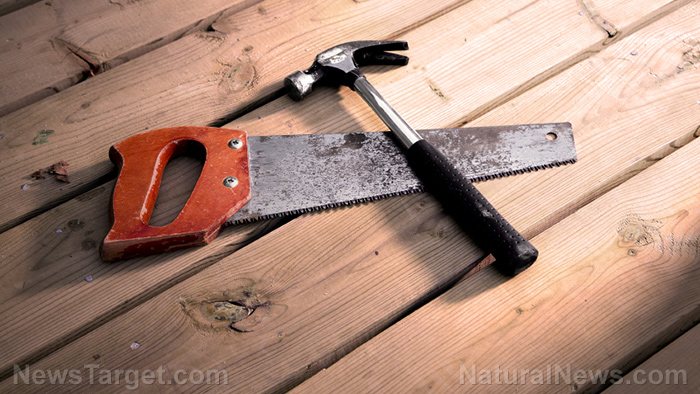
Advertisement
Many preppers think that the basic first aid kit they can buy at a local pharmacy will be enough to treat any and all potential injuries that might occur in a survival situation. However, when SHTF, you might find a standard first aid kit to be lacking in crucial medical items. The presence of these items could mean the difference between life and death in dire emergencies. Army medics are among those who often have all their bases covered when it comes to medical emergencies. You can learn how to be as prepared for medical emergencies as they are by building your own “perfect” first aid kit based on their recommendations. (h/t to TheOrganicPrepper.com)
Sterile gauze pads
You should stock up on sterile gauze pads of varying sizes to treat medium- to large-sized wounds. These bandages won’t come with any adhesives, but you can wrap them around your wounds. If you ever run out of them, sanitary napkins can serve as temporary solutions when SHTF.
Medical tape
Since the sterile gauze pads don’t have any adhesives of their own, you will need medical tape to secure them in place. You should have at least one roll of medical tape in your first aid kit. “Cohesive tapes” are ideal as they do not stick to the patient’s skin, allowing you to avoid any unnecessary pain caused by removing the tape. (Related: These are the items that you need in your first-aid kit if you just want to carry the bare minimum.)
Moleskin bandages
When you’re hiking out in the wilderness or making your way through rough terrain, your feet might be prone to getting blisters, especially if you are wearing ill-fitting shoes. Moleskin pads and bandages act as protective layers over your skin to prevent blisters from forming.

Medical scissors
Some bandages may be too large for the wounds they are meant to cover. In this case, you can use medical scissors to cut them down to a more appropriate size. Unlike regular scissors, medical scissors are also very durable to allow you to cut through thick and tough clothing to get to the wounds underneath.
Regular band-aids
Small flesh wounds, surface wounds, and paper cuts don’t really need any large band-aids to be treated. Just because these minor injuries are not life-threatening, it doesn’t mean that they should be neglected. Keep a few band-aids in your first aid kit in case of such situations.
Antibacterial soap or hand sanitizer
When SHTF, an infection is one of the worst things that can happen to an open wound. Antibacterial soaps will be useful for disinfecting wounds and keeping your hands free from disease-causing germs and bacteria.
Antibacterial ointment
After disinfecting with antibacterial soap, you can apply antibacterial ointment on the wound to kill any remaining bacteria and stop the spread of infection.
Sterile rubber gloves
You should have at least one pair of non-latex sterile disposable rubber gloves in your first aid kit. Regular rubber gloves won’t do when it comes to treating vulnerable injuries. You must make sure that they are sterile rubber gloves to avoid the risk of infection.
CPR mask or breathing barrier
Forget everything you’ve ever seen in the movies about CPR. The romantic lip-locking is nothing but a mere fantasy, and it couldn’t be further from the truth. CPR is a very serious life-saving technique that must be done properly by someone who has extensive training in this emergency procedure. A CPR mask or breathing barrier can protect both the giver and the recipient of CPR from any possible infections.
Sources include:
Submit a correction >>
This article may contain statements that reflect the opinion of the author
Advertisement
Advertisements
















